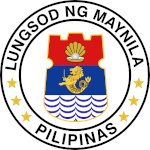Manila Day in the Philippines Date in the current year: June 24, 2026
 Manila Day is an official holiday in the National Capital Region of the Philippines. It is celebrated on June 24 to commemorate the arrival of the Spanish conquistador Miguel López de Legazpi and the founding of Spanish Manila in 1571.
Manila Day is an official holiday in the National Capital Region of the Philippines. It is celebrated on June 24 to commemorate the arrival of the Spanish conquistador Miguel López de Legazpi and the founding of Spanish Manila in 1571.Manila is the capital of the Philippines, the country’s second most populous city after Quezon City, and the most densely populated city proper in the world. The history of human settlement in the area dates back thousands of years; for example, the Agono Petroglyphs in the province of Rizal bordering on Metro Manila are dated to be around 3,000 BC.
The settlement that would become Manila was founded as a Muslim principality sometime before the 13th century. In the 13th century, it consisted of a fortified settlement and a trading quarter on the shore of the Pasig River. The historical names of the settlement include Maynila and Seludong/Selurung.
In 1565, Spanish conquistador Miguel López de Legazpi arrived in the Philippines with his expedition. After the Portuguese blockade of Cebu, which failed but left the Spanish colony with a shortage of supplies, López de Legazpi established a new settlement on the island of Panay in 1569 and sent an expedition to explore the island of Luzon in 1570, hoping to find a suitable place to establish his capital.
The Spanish attacked and besieged the settlement of Maynila in May 1570. Having won the battle, they symbolically claimed the settlement on behalf of Spain. A year later, López de Legazpi arrived in Maynila to enforce the claim. He officially established a Spanish settlement there on June 24, 1571, proclaimed it to be the capital of Luzon, and ordered the construction of a walled city in what is now the Intramuros district of Manila. Interestingly, López de Legazpi chose not to rename the settlement.
During the Spanish rule, Manila was a major center of the global silver trade and a primary outpost of the exchange of goods between the Americas, China, India, Indonesia, and Japan. Spanish trading ships that linked New Spain in the Americas with the Spanish East Indies were famously known as the Manila galleons. For twenty months between 1762 and 1764, Manila was occupied by Great Britain as a result of the Seven Years’ War.
Following the defeat of Spain in the Spanish-American War of 1898, the Philippines became a possession of the United States. During World War II, Manila was occupied by Japan. The Battle of Manila was one of the bloodiest battles in the Pacific theater of the war. At least 100,000 civilians were killed, hundreds of women and girls were raped, and the city itself was almost destroyed.
The Philippines gained independence from the United States in 1946, and two years later, the capital was transferred to the recently founded Quezon City. Manila was rebuilt throughout the 1950s and 1960s, and was reinstated as the capital during the Marcos era on June 24, 1976.
Manila Day is a special non-working holiday in Metro Manila (National Capital Region), but not in the rest of the country. Schools, government offices, and many private businesses are closed during the day so that the capital’s residents and guests can attend festivals, talent competitions, beauty pageants, and other festive events and activities. On the occasion of the holiday, the mayor of Manila awards outstanding government employees and educators for their contribution to the city’s development.
- Category
- Anniversaries and Memorial Days
- Country
- Philippines
- Tags
- Manila Day in the Philippines, holidays in the Philippines, holidays in Manila, special non-working holiday, capital of the Philippines